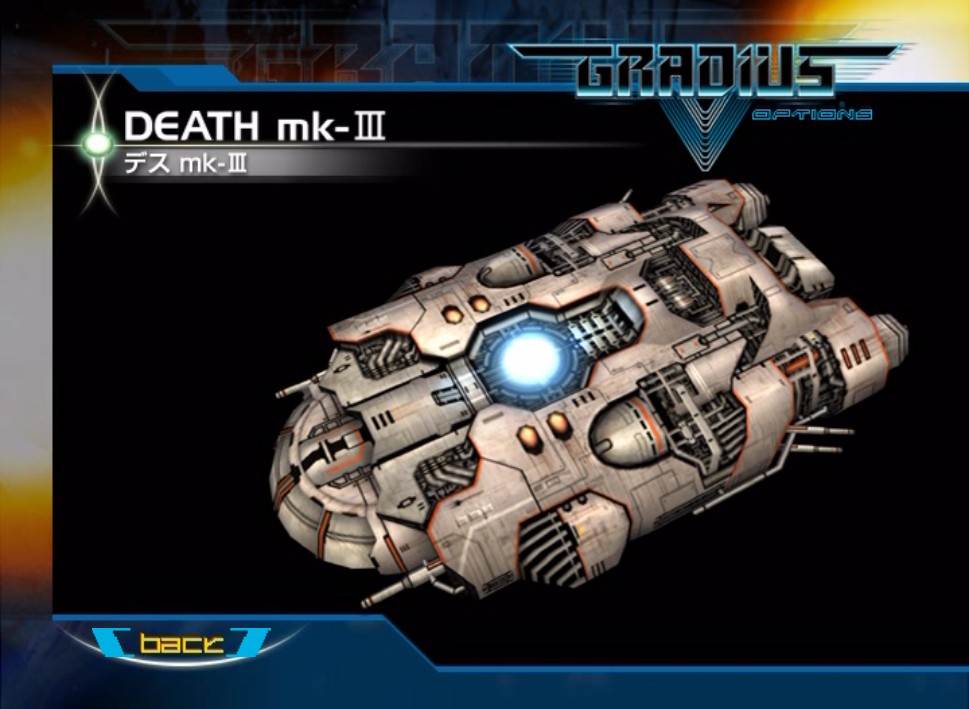
Replicating that is the tough part.įootnote: The Game Gear and the MegaDrive NH: The MegaDrive for instance has two background layers and four pallets (color definition tables). YO: So from the outset I was hearing that MegaDrive games on the 3DS would be hard.

That’s why I said “they probably won’t work out.” And that offsets the performance gains you get with the CPU.
#Gradius rebirth 3 loops software
When you bring software from an era when games were composed of sprites and backgrounds into an emulator on the 3DS, you wind up doing a lot of work in a very roundabout way. (laughs) The 3DS had a big change in architecture from the Nintendo DS and Game Boy Advance it uses a GPU that specializes in stereoscopic 3D. NH: You’re leaving a lot of the story out. When I talked to them about it, M2 told me “MegaDrive games probably won’t work out…” We started Game Gear development for Virtual Console at the same time that work on the 3D Remaster Project was going forward, and I was of course asking M2 about whether we could bring titles on SEGA hardware other than Game Gear to Virtual Console. So when M2 and the North American and European SEGA staff decided on the lineup of games for the 3D Remaster series, which included Space Harrier and Super Hang-on, and removed Thunder Blade (laughs), Sonic was one of the titles on the list. YO: Once we’d decided to restore SEGA titles with stereoscopic 3D, I actually wanted to do some home console games as well. NH: Interesting that Sonic survived the cut then. Naoki Horii (below, NH): So when you asked us if there were any MegaDrive games we could remake in stereoscopic 3D, SEGA had already started development on Sonic Generations? However, we came to the conclusion that “building something in 3D” and “taking something that was drawn in 2D and making it 3D” ultimately resulted in two different experiences, so we decided to move forward with a 3DS port. So right then, there were some inevitable doubts about whether there was any point to re-making MegaDrive Sonic, and if a remake like that was needed. Generations included a completely 3D version of the Green Hill Zone stage which replicated the original very well and also included support for stereoscopic 3D. This put us essentially around the time when development had just started on Sonic Generations, which later released for the PS3/Xbox360. First, as you may know if you’ve been following the interviews, there was quite a bit of time between when the 3D Remaster Project first started and when 3D Space Harrier was released. Still, it took us awhile to settle on Sonic. With that in mind, we considered multiple titles and in the end we chose Sonic’s debut game, because there’s nothing more SEGA than that.


But for the next game, we wanted to put out a game that people wouldn’t expect to see in 3D. People might have been looking forward to another arcade cabinet game port, but our next release is actually a stereoscopic 3D adaptation of Sonic The Hedgehog.Īs we discussed in our previous interviews, our previous two releases were games where the player “scrolls into the screen”, something easy for anyone to imagine in 3D. Yousuke Okunari (below, YO): So far with the 3D Remaster Project, we’ve put out Space Harrier and Super Hang-on. MegaDrive is difficult on 3DS VC, so enter the 3D Remaster Project! Pictured: Naoki Horii, President, M2 (left), Yosuke Okunari, Producer, SEGA CS3 (right) Siliconera is coordinating with SEGA to share these in-depth interviews about classic games like Sonic the Hedgehog and the Sega MegaDrive. Originally posted May 15th, 2013 on Impress Watch.


 0 kommentar(er)
0 kommentar(er)
